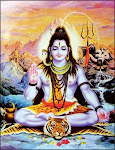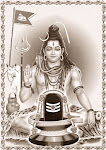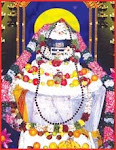Sunday, June 5, 2011
Sri Kailasanathar Swami Devasthanam: The oldest Hindu temple in Colombo,SL.!!!
Sri Kailasanathar Swami Devasthanam:
The oldest Hindu temple in Colombo
By Jajani AMARASEKARA
Sri Kailasanathar Swamy Dewashthanam
The deafening sound of Ketti Melam, music played at Tamil weddings, filled the atmosphere of Sri Kailasanathar Hindu Temple, and the grandly dressed crowd rushed around the kovil to ensure a perfect nuptial ceremony. Not wanting to barge in, we wandered around the place to find the kovil office. A man appeared from nowhere and offered us to help. "Show us the office please?" "Come I will show you," he signalled us to follow. "There, at the blue painted building." We thanked him and followed his directions. We were stunned to see the board 'wedding hall.' The man had assumed we too were invitees. After another round, around the kovil, we found the correct place and managed to meet the kovil officials.
The decorated roof
The astrology chart
A bull statue
The decorated Gopuram
Sri Kailasanathar Swami Devashthanam is a kovil hidden inside a bushy surrounding behind the Fort Railway Station. Built during the Portuguese era, it was a family kovil. Apparently, it is the oldest Hindu temple in Colombo. Although it is Sri Kailasanathar, Swami Devashthanam, many still identify it as the kovil at the Captain's Garden. Though I presumed it as an unseen and unknown kovil, we later realised that it is popular even among non-Hindus. The number of Sinhala notices displayed there makes it obvious.
The entrance to the road leading to the kovil is near the famous second-hand bookstores at D. R. Wijewerdene Mawatha. Turn right from the main road and kovil Veethi, leads to the kovil over the Fort railway lines. As soon as you take a right turn from the kovil Veethi, to the kovil grounds, there are two kovils in the vicinity; a new building and an old colour-faded building. According to the kovil Manager, the faded building is the Ganapathi Kovil and the new-fangled building is the Easwaran Kovil.
Though the two kovils are adjacent the management of the two is different. Construction of a new kovil was under way at the place. A man who hid behind the stone dust was carving beautiful sculptures from the stones brought especially from India. Nowadays with the use of machines, cutting and polishing a stone into a sculpture is an easy task. However, the life of the artisans who originally built the kovil would have undergone many difficulties. The clerk of the kovil office, Nesarajah, took us on a tour around the kovil. Starting from the intricate lotus-carved main door, the tour covered almost all corners of the kovil. As soon as we entered, Nesarajah pointed to the roof. Oh! A gorgeous carving of an astrology chart, adorned the roof entrance. Magnificent paintings of Gods and Goddesses decorated the entire roof of the kovil. The kovil is full of statues of various gods. Shrines dedicated to various gods filled every empty slot of the temple.
The Vel Cart
"Easwaran kovils usually have shrines for almost every god," said the manager. The kovil has shrines for almost every god whom I have read in Tamil folk tales. Sri Kailasanathar Swamy Devashthanam is the starting point of the Vel ceremony, which later went up to Bamabalapitiya on the Galle Road. The kovil has two major festivals, in March and August.
The March festival is dedicated to goddess Pattini, while the August festival is dedicated to God Easwaran.
There is a beautiful Vel cart, decorated with intricate wooden carvings. In June 2010, the kovil Management had organised the most recent Kumbabhishekam ceremony. The kovil offers different special poojas for various gods during the week.
Beginning the week on Monday with a pooja offered to Goddess Pattini, the kovil has a unique set of poojas to Goddess Durga, Bahirawa, and nine planets. On Poya days, the Sri Sakkara Pooja is followed by an almsgiving to the devotees.
The Kannagi Amman festival began on May 25, and it will last for 10 consecutive days, Nesarajah said. The shrines of Goddess Pattini and God Easwaran had two carved bronze flag poles in front.
SUNDAYOBSERVER.LK
Subscribe to:
Posts (Atom)






